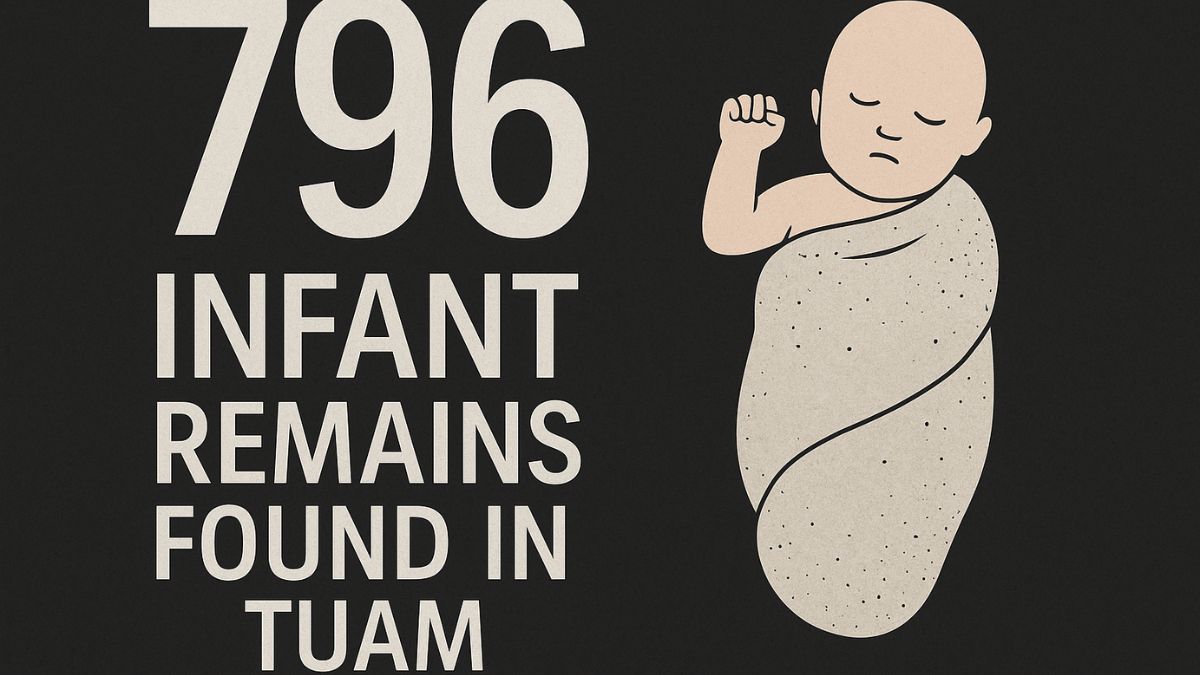New York: It’s a story that feels ripped from a horror movie—except it happened in real life, buried beneath a seemingly ordinary grass lawn in Tuam, County Galway. This remote site isn’t a mass grave from a war but the resting place of 796 babies—infants and toddlers—found in a disused sewage tank at the Bon Secours Mother and Baby Home. The excavation, which began mid‑June 2025, marks the start of what could be a two‑year effort to bring dignity and truth to these lost lives.
That septic “pit” isn’t just a physical space—it’s the latest symbol of Ireland’s deep reckoning with its fraught 20th‑century history. Between 1925 and 1961, unmarried mothers were sent here to give birth, often coerced or isolated, and their babies—frequently the shortest lives—were buried in unmarked graves with no consent, no ceremony, and no goodbye.
Now, forensic teams under the Office of the Director of Authorised Intervention (ODAIT) are exhuming, analyzing, and working toward identifying these children—some as young as 35 weeks gestation—from the lowliest of final resting places. Survivors and descendants are standing by for answers, validation, and the hope of proper burials in a mass reburial cemetery.
“It’s a very, very difficult, harrowing story and situation. We have to wait to see what unfolds now as a result of the excavation,” Irish Prime Minister Micheal Martin said Monday.
What is the Bon Secours Mother and Baby Home?
The Bon Secours Home, also known as St Mary’s, operated from 1925 to 1961 under Catholic nuns in Tuam. It functioned as a place where unmarried pregnant women—shamed by society—were sent to give birth and then forced into servitude for a year. Their babies were taken away and given up for adoption, often without the mothers’ consent.
By 2014, historian Catherine Corless uncovered 796 death records of children who died there—with only two matching known burials. Maps and forensic tests later confirmed the site was built in a former sewage structure that became the mass grave.
796 dead babies found hidden in septic tank at unwed mothers’ home run by nuns.
THIS IS AWFUL TO DO THIS TO HUMAN BEINGS.😳Now, finally, more than a decade on, a team of investigators began their forensic investigation this week.
It is expected to take up to two years to… pic.twitter.com/a5iBxBri9m— 🦅 Eagle Wings 🦅 (@CRRJA5) June 17, 2025
🚨 796 DEAD BABIES. DUMPED IN A SEPTIC TANK. BY NUNS.
Between 1925–1961, unwed mothers in Ireland were hidden away in Catholic-run “mother & baby” homes. One of the worst was in Tuam.
Nearly 800 babies died there – from starvation, neglect, abuse, or were simply “disappeared.”… pic.twitter.com/OOG6W4WtVg
— HustleBitch (@HustleBitch_) June 17, 2025
What’s Happening Now: The Excavation Timeline
- Site secured and fenced (June 16, 2025) — Forensic teams began work, surrounded by a modern housing development.
- Forensic exhumation expected to last two years — DNA tests, identification, and dignified reburials are the goal.
- Families and survivors invited — Relatives and former residents will be invited to observe, contributing to a national moment of reckoning.
Mother and Baby Homes in Ireland
Tuam isn’t isolated—18 similar homes exist across Ireland. From Bessborough to Castlepollard, these institutions were infamous for high death rates, forced adoptions, and unmarked burials. Over 9,000 child deaths were recorded in commission reports.
Today’s excavation is as much about uncovering institutional truth as it is about giving identity and remembrance. Survivors demand systemic change, accountability, and justice—for the forgotten and for their living witnesses.
Also Read: The Dark Truth Beneath Lake Lanier: Deaths, Hauntings & a Drowned Town
What Comes Next?
DNA identification: Relatives calling for testing to reunite remains with families.
Restorative burials: Planning underway for memorial cemetary reburial.
Church accountability: While the nuns have issued an apology, they’ve mostly refused financial contributions; reparations remain uncertain.







